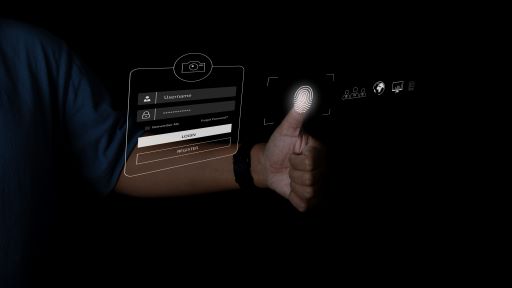Table of Contents
In a previous post, we discussed the basics of Passwordless authentication and its advantages for businesses. In this follow-up post, we’ll delve deeper into maximizing the benefits of this innovative security solution for your organization.
Choosing the Right Solution Passwordless Authentication Solution
When it comes to Passwordless authentication, there are several options to choose from. Some of the most popular include biometric authentication, two-factor authentication (2FA), and single sign-on (SSO) solutions. Each solution has its own unique benefits and limitations, so it’s important to choose the right one for your business. Here are some factors to consider:
- Level of security required: Biometric authentication, such as facial recognition or fingerprint scanning, is considered the most secure form of Passwordless authentication. However, it may not be necessary for all businesses. Consider the level of security required for your data and systems when choosing a solution.
- User experience: Passwordless authentication should improve the user experience, not detract from it. Consider the ease of use and convenience of each solution for your users.
- Compatibility with existing systems and apps: It’s important to ensure that your Passwordless solution is compatible with your existing systems and apps. Make sure to consider compatibility when choosing a solution.
Additional Factors to Consider
In addition to security and compatibility, user experience is another important factor to consider when choosing a Passwordless authentication solution. Biometric authentication, for instance, offers a highly convenient and secure experience, as users can access their accounts simply by using their fingerprints or facial recognition.
On the other hand, two-factor authentication (2FA) may require users to enter a code sent to their mobile device, which can be seen as an inconvenience. Single sign-on (SSO) solutions offer a streamlined experience for users by allowing them to access multiple systems and apps with a single set of credentials, reducing the number of passwords they need to remember. When evaluating different options, it’s important to weigh the trade-offs between security, ease of use, and user experience to make the best choice for your business.
Investing in Hardware and Software
Implementing a Passwordless authentication solution requires investment in both hardware and software. For biometric authentication, you’ll need high-quality hardware such as fingerprint scanners or facial recognition cameras. In addition, you’ll need to ensure that your software infrastructure is up to date and capable of supporting the Passwordless solution you choose. These investments are necessary to ensure that your Passwordless system is effective and secure.
Importance of User Education and Training
It’s crucial for businesses to invest in user education and training to ensure that employees are comfortable and confident using the Passwordless authentication system. This education should cover the basics of how the system works, how to use it, and what to do in the event of technical issues. Providing regular training sessions and updating employees on any changes or updates to the system will ensure that everyone is up to speed and able to take full advantage of the benefits of Passwordless authentication. Additionally, having clear guidelines and protocols in place for employees to follow will make the transition to Passwordless authentication smoother and more seamless.
Considerations
While Passwordless authentication has many benefits for businesses, it’s important to consider the potential drawbacks as well. Here are some considerations to keep in mind:
- Upfront costs: There may be upfront costs associated with setting up a Passwordless system, and there may be additional costs for hardware and software upgrades. Make sure to budget for these costs when considering Passwordless authentication.
- Security: Passwordless authentication is considered more secure than traditional username and password systems, but it’s not foolproof. If user devices are compromised, sensitive data could be vulnerable to unauthorized access. Consider the risks and take appropriate measures to mitigate them.
Enhancing User Experience
Passwordless authentication can improve the user experience by reducing the need for multiple passwords and login credentials. Users can access their accounts and applications more quickly and easily, without having to remember multiple passwords or complete cumbersome authentication steps. This can result in increased productivity, improved customer satisfaction, and reduced frustration for employees and customers alike. Moreover, Passwordless authentication solutions can also offer users a more secure and private browsing experience, without the need for usernames and passwords that can be easily forgotten, lost or stolen. By taking advantage of the latest biometric technologies, businesses can improve the overall user experience and keep users coming back to their applications and websites.
In conclusion, Passwordless authentication is an innovative and secure solution for businesses looking to improve their security measures. By choosing the right solution, investing in hardware and software, and considering potential drawbacks, businesses can maximize the benefits of Passwordless authentication and protect their data from cyber threats. When implemented correctly, Passwordless authentication can offer a more convenient and secure way for employees to access data and systems, improve user experience, and reduce costs associated with password resets. Consider this solution for your business to take the first step towards improved security.


1 thought on “Maximizing the Revolutionary Benefits of Passwordless Authentication for Your Business: A Follow-Up”